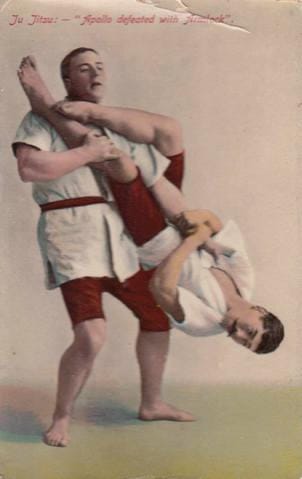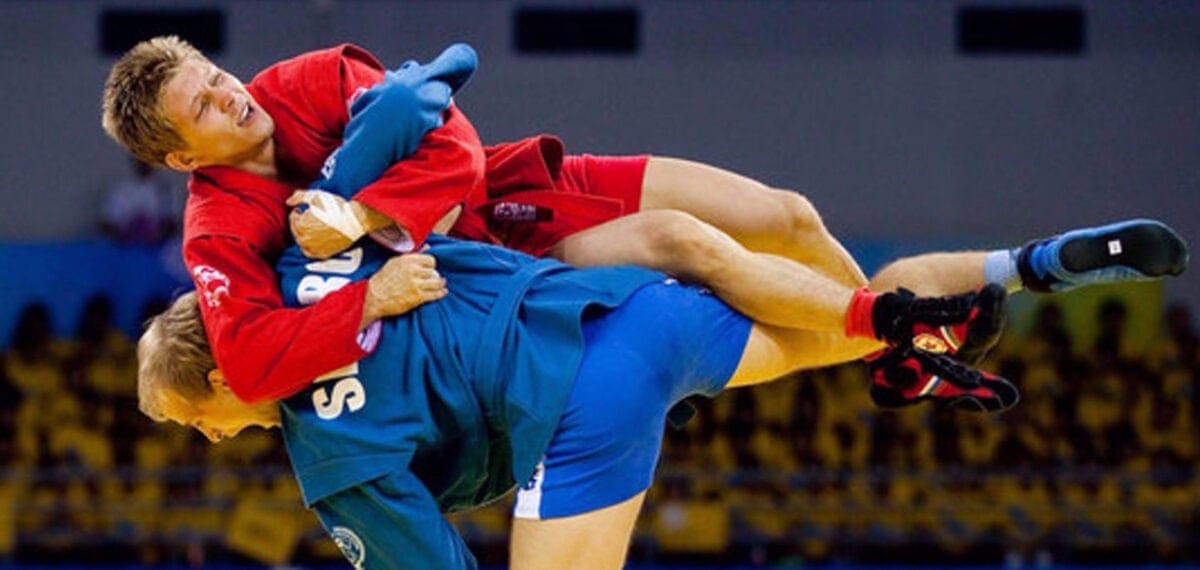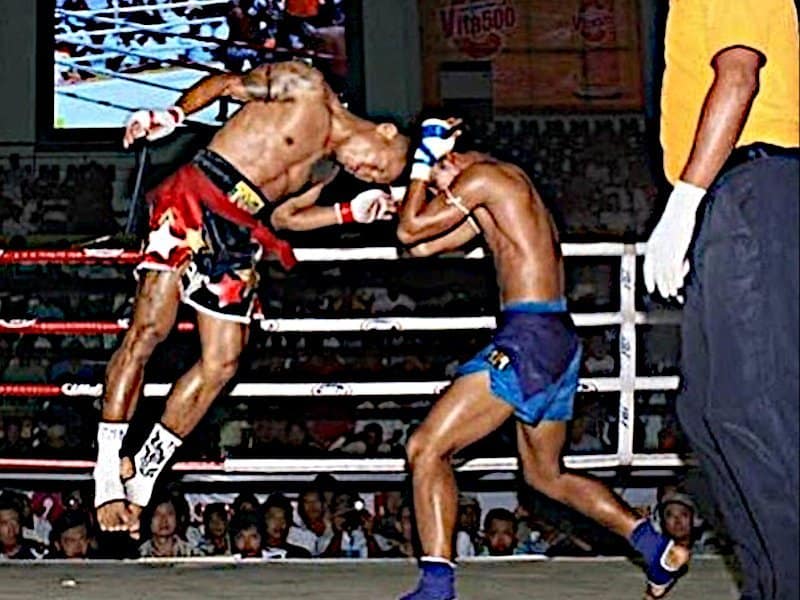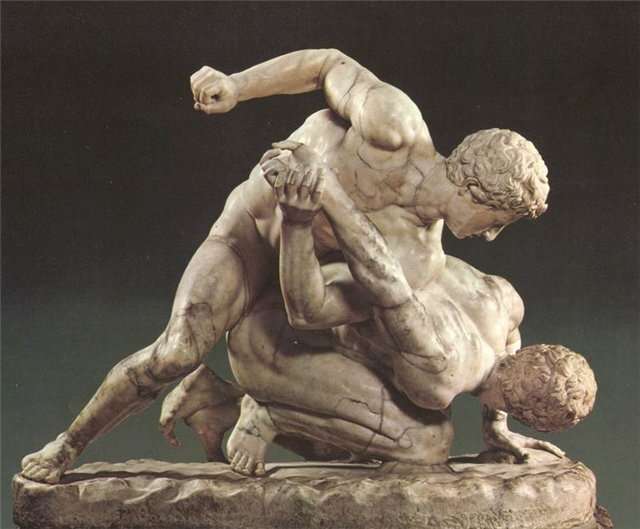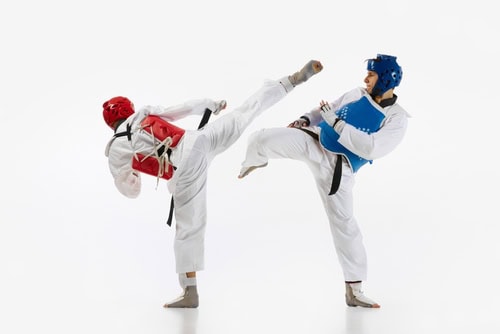Across cultures and continents, humanity has developed warrior traditions that test the absolute limits of physical and mental capability. From the sophisticated ground game of Brazilian Jiu-Jitsu to the brutal striking of Kyokushin Karate, certain martial arts stand apart as extraordinarily demanding disciplines that can take decades to master.
The question of hardest martial art has sparked countless debates among practitioners, coaches, and combat sports enthusiasts. While any martial art requires dedication, some systems push human capabilities to extremes through their technical complexity, physical conditioning requirements, and mental fortitude demands. These fighting styles don't just teach self-defense—they forge practitioners in the crucible of pain, perseverance, and precision.
What makes a martial art truly difficult? Is it the years required to reach mastery, the physical demands that break lesser practitioners, or the psychological challenges that test every aspect of human will? This comprehensive analysis draws on decades of research, expert testimonies, and firsthand training experience to explore the world's most challenging combat disciplines.
Whether you're seeking the ultimate self-defense system or simply curious about which martial disciplines demand the most from their practitioners, we'll examine why certain arts have earned reputations as the hardest to learn and master.
What Makes a Martial Art Difficult?
Before diving into specific styles, it's important to understand what actually makes a martial art difficult. The hardest martial arts to learn typically share several key characteristics:
High Physical Demand
Some martial arts require exceptional physical attributes - extraordinary strength, cardiovascular endurance, flexibility, or pain tolerance. These systems push the human body to its absolute limits, demanding years of conditioning before techniques can be properly executed.
As world-renowned Brazilian Jiu-Jitsu practitioner Rickson Gracie famously observed, "Jiu-jitsu is a game, it's 3-D kinetic chess." This captures how the most challenging martial arts combine physical demands with deep strategic thinking. The hardest styles require not just physical power but the ability to apply sophisticated techniques under extreme pressure.
Complex Techniques
The technical complexity of certain martial arts can be overwhelming. Some fighting systems contain hundreds or even thousands of techniques, requiring practitioners to master intricate movements, precise timing, and complex combinations.
"One becomes a beginner after one thousand days of training and an expert after ten thousand days of practice"
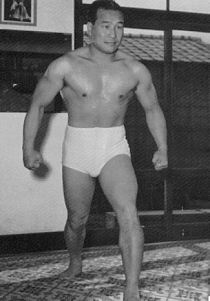
Source: bloodyelbow.com
Mas Oyama, founder of Kyokushin Karate, training perspective perfectly captures the immense technical depth found in the most difficult martial arts
Long Mastery Time
Perhaps the defining characteristic of the hardest martial arts is the extraordinary time commitment required to reach mastery. While most physical activities might take months or years to become proficient, the most demanding martial arts often require decades of consistent practice.
The martial arts community has long recognized this through the saying "A black belt is just a white belt who never quit," acknowledging that persistence over time is the true measure of a martial artist.
Mental and Emotional Discipline
The psychological demands of certain martial arts can be just as challenging as the physical requirements. Many traditional systems place enormous emphasis on mental fortitude, emotional control, and spiritual development.
As Gichin Funakoshi wisely noted, "The goal of martial arts is to affect the mind and spirit, not just the body." The hardest martial arts push practitioners to develop not just fighting techniques but an entirely new mindset.
Danger Level
Some martial arts involve inherently higher risk of injury or physical trauma. Full-contact fighting styles that emphasize realistic combat scenarios often place practitioners in genuinely dangerous situations, requiring them to develop both technical skill and mental resilience in the face of potential harm.
The 10 Hardest Martial Arts in the World
After examining martial arts systems worldwide, I've identified what I consider to be the ten most challenging disciplines to master. Each demands extraordinary commitment across multiple dimensions - physical, technical, mental, and emotional.
Brazilian Jiu-Jitsu (BJJ)
Brazilian Jiu-Jitsu stands out as possibly the most difficult martial art to master for several compelling reasons. BJJ focuses on ground grappling, demanding practitioners master numerous complex techniques and movements at every stage of progress, requiring immense time and dedication. The physical demands are extraordinary, with training sessions that challenge even elite athletes.
What makes BJJ particularly difficult is the depth of its technical system. It can take a trainee up to a year of practice just for their body to become accustomed to the BJJ martial art, as it's a psychologically and physically taxing discipline that requires a level of flexibility that can only be developed over time.
The progression system in BJJ is notoriously slow. A black belt in Brazilian jiu-jitsu commonly takes more than several years to earn, with the average time frame around 10 years of consistent training before reaching this expert level. Some elite practitioners like Ryron Gracie suggest that with focused training, advancement to black belt should take about 7 years, but this is still significantly longer than many other martial arts.
What I've observed in my years training alongside BJJ practitioners is that the mental challenges are equally significant. The art forces you to develop extraordinary problem-solving abilities under physical duress. As your opponent actively works to defeat you, you must simultaneously analyze positions, anticipate movements, and execute precise counters - often while managing discomfort and fatigue.
Muay Thai
Known as "The Science of Eight Limbs," Muay Thai originated in Thailand and has earned its reputation as one of the world's most demanding combat sports. Using punches, kicks, elbows, and knees, Muay Thai fighters develop devastating striking abilities through notoriously brutal training methods.
What makes Muay Thai so challenging is its emphasis on conditioning and pain tolerance. Muay Thai is an aggressive system where the primary objective is to hurt the opponent as much as possible with every punch, kick, knee, or elbow strike - this focus on power and aggression makes it extraordinarily demanding physically.
The training methodology is famously difficult. Traditional Thai camps involve running miles before dawn, hundreds of kicks on heavy bags, endless rounds of pad work, and regular full-contact sparring. Conditioning the shins - a process that literally deadens nerves through repeated impact - is perhaps the most notorious aspect of Muay Thai training.
From my experience watching Muay Thai fighters train, I've been struck by their extraordinary mental toughness. The willingness to exchange powerful strikes and absorb significant punishment requires psychological fortitude that few other martial arts demand to the same degree.
Kyokushin Karate
Founded by Masutatsu Oyama in 1964, Kyokushin is widely regarded as one of the hardest karate styles in the world. It's a full-contact system that emphasizes realistic combat and intense physical conditioning.
Kyokushin's extreme difficulty stems from several factors. It's known for testing a practitioner's pain threshold in a way few other martial arts do - taking bareknuckle punches, knees, and elbows over multiple rounds is one of the most punishing experiences in any martial art.
The style's founder was legendary for his toughness, reportedly fighting and killing bulls with his bare hands and engaging in 300-man kumite challenges. This spirit of extreme challenge permeates Kyokushin training, with practitioners regularly engaged in grueling conditioning exercises and full-contact sparring.
What makes Kyokushin particularly demanding is its combination of technical precision with raw power. Practitioners must develop perfect form while also building the physical strength and mental fortitude to deliver and receive devastating strikes. The system's testing requirements, particularly at higher levels, involve brutal endurance challenges that push many practitioners to their breaking point.
Sambo (Combat Sambo)
Developed for the Soviet Red Army in the 1920s, Sambo (an acronym for "self-defense without weapons" in Russian) combines elements of judo, wrestling, and various regional grappling styles into a highly effective combat system.
Even though Sambo has been around since the 1920s, it wasn't receiving much attention from the public until Sambo-trained fighters started winning major fights in MMA. In some ways, Sambo resembles modern MMA fighting as a unique mixture of techniques from different martial arts like judo, jujutsu, and various styles of wrestling.
Combat Sambo, the military variant that includes strikes along with grappling techniques, is particularly challenging. It was designed for real combat situations and includes striking techniques with kicks and punches, along with brutal techniques like headbutts, which fighters can use at any moment during a fight. This comprehensive approach requires mastery across multiple fighting domains.
The technical breadth of Sambo is extraordinary, combining throwing techniques from judo, takedowns from wrestling, and a vast array of submissions including its signature leg locks. This diverse technical arsenal makes Sambo exceptionally difficult to master, requiring years of dedicated practice across different fighting ranges and scenarios.
Lethwei
Often called "The Art of Nine Limbs," Lethwei is an ancient martial art from Myanmar that many consider to be among the most brutal fighting systems in existence. It allows punches, kicks, knees, elbows, and headbutts - making it even more comprehensive than Muay Thai.
What makes Lethwei extraordinarily difficult is its extreme ruleset and training methods. Lethwei fighters compete bareknuckle without wearing any padded boxing or open-fingered gloves, only wrapping their hands in gauze. The emphasis is on throwing each strike with full power with the goal of finishing the fight, resulting in a high injury rate.
Traditional Lethwei contests historically had no judges and continued until one fighter was knocked out or could not continue. While modern competitions have adopted some safety measures, the art remains incredibly demanding both physically and mentally.
From my perspective as a martial arts instructor, what makes Lethwei particularly challenging is the headbutt technique, which is difficult to master safely and adds a dangerous dimension to both offense and defense. Few martial arts require practitioners to develop such comprehensive striking abilities while also building the fortitude to engage in such high-risk exchanges.
Wrestling
One of humanity's oldest combat sports, wrestling exists in various forms across cultures worldwide. Whether Greco-Roman, freestyle, folkstyle, or traditional variants, wrestling consistently ranks among the most physically demanding martial arts.
The difficulty of wrestling stems from its intense physical requirements and technical complexity. Wrestlers develop extraordinary levels of strength, explosiveness, endurance, and body awareness through grueling training regimens. The sport demands complete physical commitment, with successful practitioners typically training multiple times daily from a young age.
Wrestling skills are highly transferable to other combat sports, as wrestlers are tough and athletic and can control where a fight takes place with their takedown skills. The intensity and mindset of wrestling also prepare practitioners for real-life conflicts.
What makes wrestling particularly challenging is the mental toughness required. The physical discomfort of training, strict weight management, and the one-on-one nature of competition create psychological pressures few other sports match. Wrestlers must develop extraordinary resilience and competitive drive to succeed at higher levels.
Kung Fu (Shaolin and other styles)
Kung Fu encompasses hundreds of distinct Chinese martial arts styles, each with unique characteristics. The Shaolin system, with its origins in Buddhist monasteries, is perhaps the most famous and represents one of the most comprehensive martial arts systems in existence.
What makes traditional Kung Fu extraordinarily difficult is the sheer breadth and depth of its technical curriculum. Many styles contain thousands of techniques organized into intricate forms (kata) that take years to learn and decades to master. The precision required in executing these techniques compounds the difficulty.
"Learning Kung fu has only one purpose: To train one's reaction into a natural response. Such reaction is essential." This idea of training until techniques become instinctive requires extraordinary commitment.
Traditional training methods add another dimension of difficulty. Authentic Shaolin training involves grueling conditioning exercises specifically designed to develop attributes needed for fighting techniques. Stone locks, weighted weapons, stance training held for hours, and iron palm conditioning represent just a few of the demanding physical practices.
Pankration
An ancient Greek combat sport introduced to the Olympic Games in 648 BCE, Pankration combined wrestling and striking in what many consider the original mixed martial art. Modern variants attempt to recreate this comprehensive fighting system.
The exceptional difficulty of Pankration stems from its requirement for mastery across all fighting ranges. Practitioners must develop proficiency in striking, clinching, throwing, and ground fighting - a comprehensive skill set that few other traditional martial arts demand.
The sport's ancient origins reflect its brutal nature. Historical accounts describe matches continuing until submission or unconsciousness, with only biting and eye-gouging prohibited. Modern Pankration maintains much of this intensity while incorporating contemporary training methods.
What makes Pankration particularly challenging is the strategic complexity of integrating different fighting domains. Practitioners must develop the ability to transition seamlessly between striking and grappling, requiring years of practice to develop effective timing and tactical awareness.
Krav Maga
Developed for the Israeli Defense Forces, Krav Maga is a modern self-defense system designed for real-world violence. It incorporates techniques from boxing, wrestling, judo, and other martial arts, focusing on efficiency and practicality in dangerous situations.
What makes Krav Maga exceptionally difficult isn't technical complexity but psychological intensity. Training deliberately creates stress responses, often incorporating multiple attackers, weapons, and environmental factors to simulate genuine threats. This pressure-testing approach creates unique mental and emotional challenges.
Unlike competitive martial arts, Krav Maga training focuses on worst-case scenarios - armed assailants, multiple attackers, and life-threatening situations. This orientation toward extreme violence requires practitioners to develop extraordinary mental fortitude.
The system's emphasis on continuous fighting through injury also adds significant difficulty. Krav Maga training deliberately develops the ability to sustain an attack despite pain or disadvantage, requiring practitioners to overcome natural self-preservation instincts.
Taekwondo (Traditional & Competitive Sport)
Korea's most famous martial art, Taekwondo is renowned for its dynamic kicking techniques. While Olympic-style competition emphasizes sport aspects, traditional Taekwondo represents a comprehensive fighting system with extraordinary technical demands.
What makes Taekwondo exceptionally challenging is the physical requirements for its signature techniques. The high, spinning, and jumping kicks demand extraordinary flexibility, balance, timing, and explosive power. Few martial arts require such physical attributes for their core techniques.
The progression system in traditional Taekwondo is notoriously demanding. Advancement through belt ranks typically requires memorization of complex forms (poomsae), breaking demonstrations, and combative applications, creating a steep technical learning curve.
Competition at higher levels adds another dimension of difficulty. Olympic-style Taekwondo requires competitors to develop extraordinary speed, precision, and tactical awareness. The ability to execute complex techniques against resistant opponents requires years of dedicated practice.
Final Thoughts
After exploring the world's hardest martial arts, one truth becomes apparent: difficulty is multidimensional. Brazilian Jiu-Jitsu's technical complexity, Muay Thai's physical brutality, Kyokushin's pain tolerance requirements, and Krav Maga's psychological intensity each present unique challenges. The "hardest martial art to learn" ultimately depends on individual attributes, learning styles, and personal goals.
In my four decades of martial arts experience, I've come to appreciate that the question isn't just "what is the hardest martial art?" but rather "which martial art challenges you in the ways you need to grow?" For some, the mental discipline of traditional arts provides the greatest challenge. For others, the physical demands of combat sports present the ultimate test.
What martial art has challenged you the most? Are you currently training or considering starting your journey in one of these demanding disciplines? I'd love to hear your experiences and answer any questions you might have about these formidable fighting systems. Share your thoughts in the comments below!


